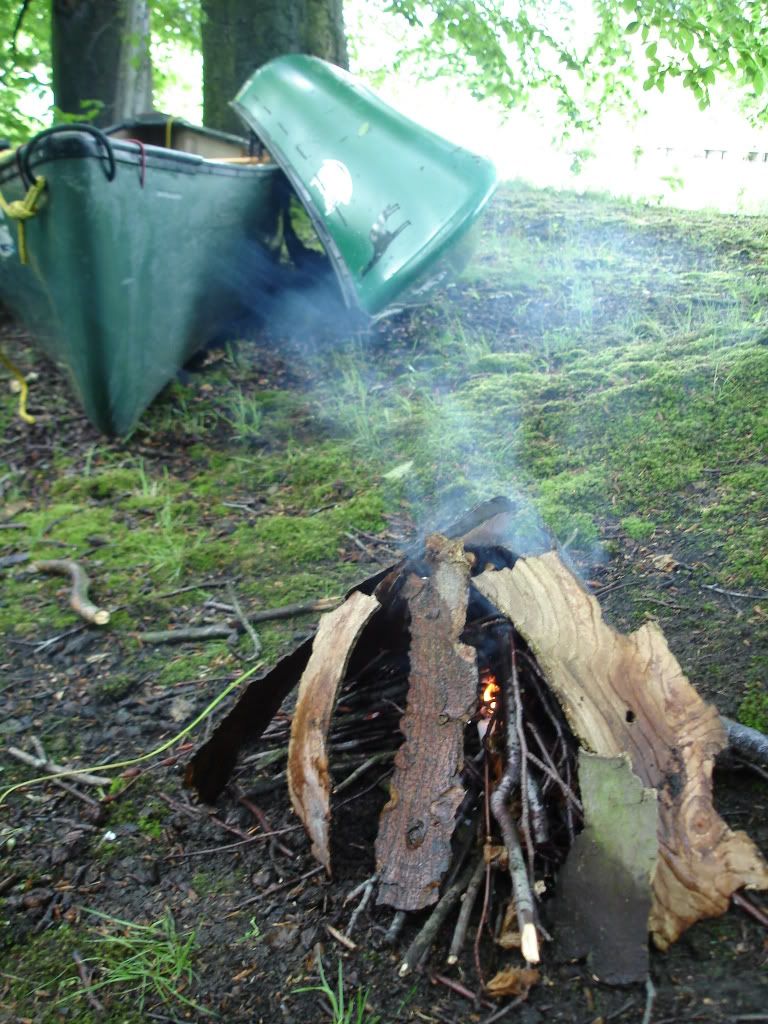I don't have much experience of starting fires, so I thought I would give it a try whilst Out today in cold misty woods, most of everything on the ground was wet, I found a good amount of birch bark, some old mans beard(damp) and some twigs from pine trees A few birch sticks carved into firestick sort of shapes and shavings (bit damp).
I cleared a small patch 1ft by 1ft to earth and laid down some inch diameter sticks as a platform and laid the birch bark and beard down and had a go at trying to get it lit with a clipper lighter.
I managed to get it lit for a bit but eventually it smoldered out as I think the only thing burning was the birch bark.
I think the platform of birch was sapping the energy from the small flames that did light.
My question is in this type of scenario where everything is cold, damp and or wet what do we do to get a good fire going with limited resources only coming from 'on site'?
I cleared a small patch 1ft by 1ft to earth and laid down some inch diameter sticks as a platform and laid the birch bark and beard down and had a go at trying to get it lit with a clipper lighter.
I managed to get it lit for a bit but eventually it smoldered out as I think the only thing burning was the birch bark.
I think the platform of birch was sapping the energy from the small flames that did light.
My question is in this type of scenario where everything is cold, damp and or wet what do we do to get a good fire going with limited resources only coming from 'on site'?

